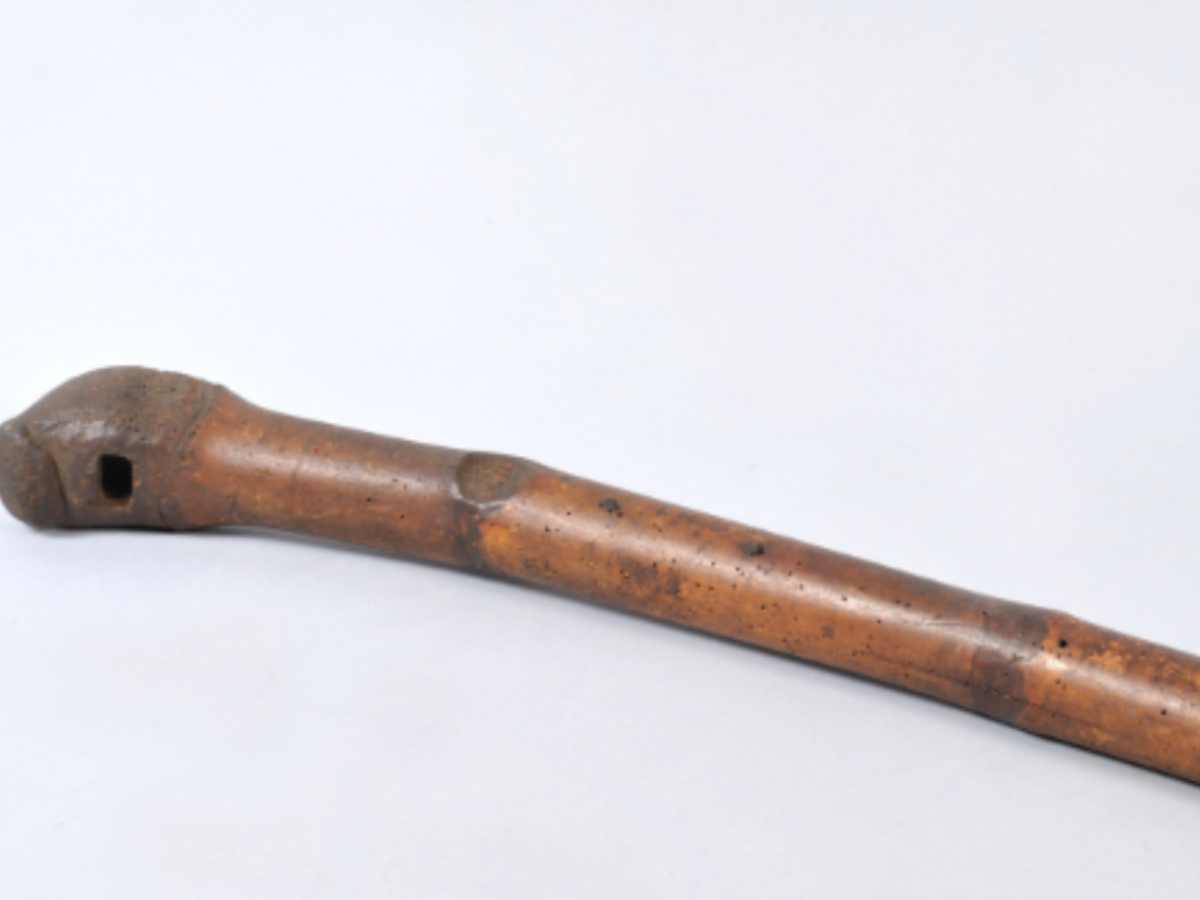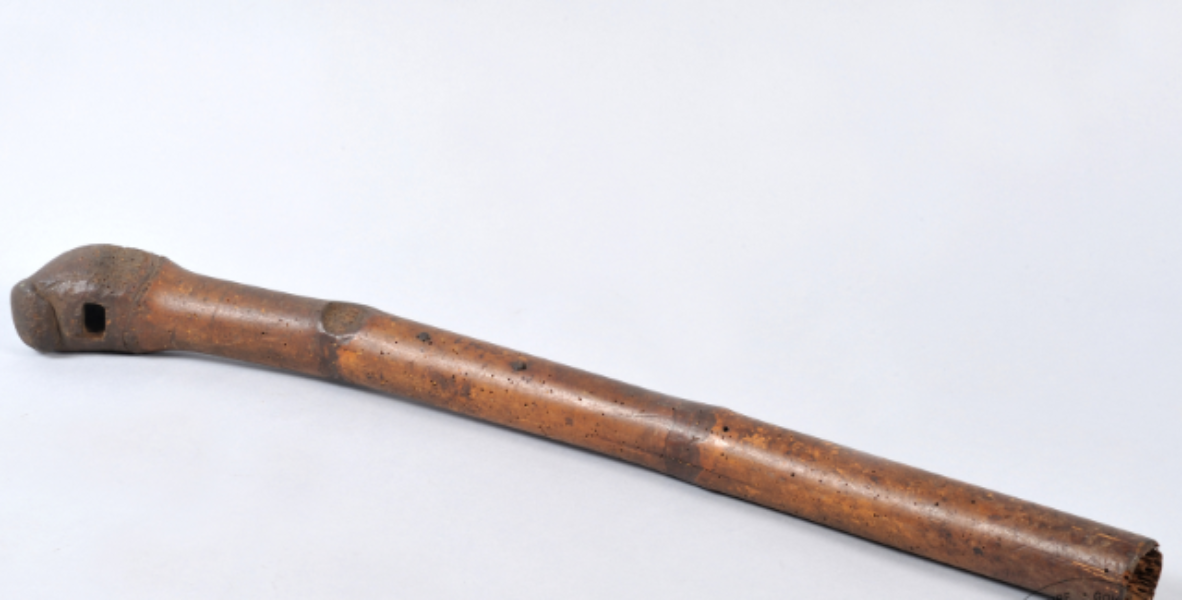State
Tribe Name
Art Type
short description
The Mikir tribe is now officially known as the Karbi tribe, an indigenous community that mainly inhabits the present states of Assam and Arunachal Pradesh. The Mikir tribe is mainly agricultural and has developed tools peculiar to their own traditional way of farming. One of the important tools is the hoe with a bamboo shaft, which serves as an important implement in their agricultural practice.
The hoe shaft is long, made of bamboo in a region abundant in bamboo with the anterior end being slightly curved, while a hole is provided for the attachment of the blade (currently absent). The anterior end, thick and bulged, adds to the strength and grip of the hoe shaft, looking like a club. This design shows a profound understanding of the bamboo's strength and flexibility, thus making tilling of land easy.
Practically, bamboo implements such as these hoe shafts are quite essential for jhum farming (shifting cultivation) practiced by the Mikir/Karbi tribe. Light and strong, the hoe shaft is easily handled and hence is better than any of the metal or wooden implements. The hoe shaft stands to symbolize the sustainable utilization of natural resources on the Mikir, who have creatively drawn on some of the resources around them.
The hoe shaft is long, made of bamboo in a region abundant in bamboo with the anterior end being slightly curved, while a hole is provided for the attachment of the blade (currently absent). The anterior end, thick and bulged, adds to the strength and grip of the hoe shaft, looking like a club. This design shows a profound understanding of the bamboo's strength and flexibility, thus making tilling of land easy.
Practically, bamboo implements such as these hoe shafts are quite essential for jhum farming (shifting cultivation) practiced by the Mikir/Karbi tribe. Light and strong, the hoe shaft is easily handled and hence is better than any of the metal or wooden implements. The hoe shaft stands to symbolize the sustainable utilization of natural resources on the Mikir, who have creatively drawn on some of the resources around them.
Thumbnail

Filter Postion
Left
Filter Background
Off
Theme
Filter Header Image

content
Image

description
The Mikir tribe is now officially known as the Karbi tribe, an indigenous community that mainly inhabits the present states of Assam and Arunachal Pradesh. The Mikir tribe is mainly agricultural and has developed tools peculiar to their own traditional way of farming. One of the important tools is the hoe with a bamboo shaft, which serves as an important implement in their agricultural practice.
The hoe shaft is long, made of bamboo in a region abundant in bamboo with the anterior end being slightly curved, while a hole is provided for the attachment of the blade (currently absent). The anterior end, thick and bulged, adds to the strength and grip of the hoe shaft, looking like a club. This design shows a profound understanding of the bamboo's strength and flexibility, thus making tilling of land easy.
Practically, bamboo implements such as these hoe shafts are quite essential for jhum farming (shifting cultivation) practiced by the Mikir/Karbi tribe. Light and strong, the hoe shaft is easily handled and hence is better than any of the metal or wooden implements. The hoe shaft stands to symbolize the sustainable utilization of natural resources on the Mikir, who have creatively drawn on some of the resources around them.
The hoe shaft is long, made of bamboo in a region abundant in bamboo with the anterior end being slightly curved, while a hole is provided for the attachment of the blade (currently absent). The anterior end, thick and bulged, adds to the strength and grip of the hoe shaft, looking like a club. This design shows a profound understanding of the bamboo's strength and flexibility, thus making tilling of land easy.
Practically, bamboo implements such as these hoe shafts are quite essential for jhum farming (shifting cultivation) practiced by the Mikir/Karbi tribe. Light and strong, the hoe shaft is easily handled and hence is better than any of the metal or wooden implements. The hoe shaft stands to symbolize the sustainable utilization of natural resources on the Mikir, who have creatively drawn on some of the resources around them.
Image Mode
landscape
promoted
Off
Verified
Off
